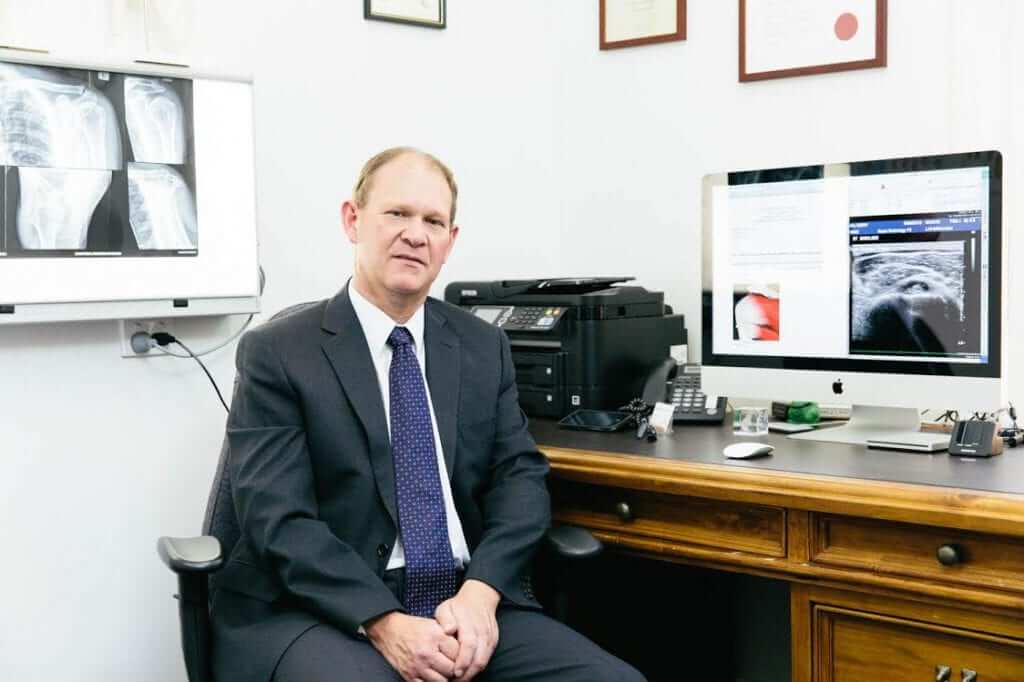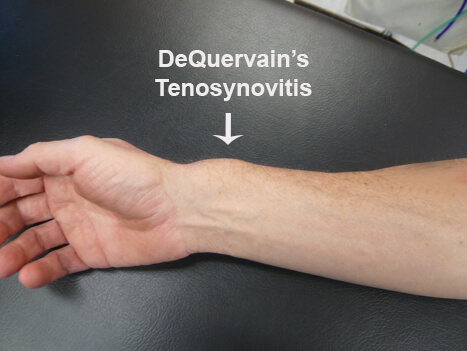Upper limb surgery refers to surgery of the shoulder and elbow, separate to hand surgery which involves surgeries of the hand and wrist.
At Glenelg Orthopaedics in South Australia, our surgeon Dr Gavin Nimon has extensive experience in surgery of all of these areas.
In this blog post, Gavin Nimon shares with us the different types of upper limb surgery and answers the commonly asked questions for these surgery types.
Shoulder Surgery – what’s involved?
The shoulder is one of the most used joints in the body, and is highly susceptible to injuries through sports and/or wear and tear. Subsequently some people will need to undergo shoulder surgery during their lifetime.
One of the most common operations performed by Dr Gavin Nimon involves arthroscopic surgery of the shoulder and often in the form of reconstructions.
Shoulder Reconstruction can include surgery that can be as minor as decompressing or debriding (cleaning out) the shoulder region, so that tendons that are inflamed by spurs of bone are given more space.
It can also refer to repair of the tendons or ligaments around the shoulder (the main ones being repair of the rotator cuff tendons or repair of the gleno-humeral ligaments) the former to provide motion and the latter stabilise the shoulder. A labral or Bankart reconstruction, as is done for shoulder stability or dislocating shoulders.

What do we mean when we talk about “arthroscopic procedures?
An arthroscopic procedure involves the use of a tiny camera to thoroughly investigate the joint and tendons. The surgery, commonly referred to as keyhole surgery, is then undertaken to inspect the joint from the inside and repair any damaged tissue if required in a totally arthroscopic method, which leaves minimal scaring at the incision.
Procedures and recovery involving the Rotator Cuff
Complete ruptures of the rotator cuff usually require surgery which involves stitching the torn tendon back onto the humerus – the arm bone located between the elbow and the shoulder, using state-of-the-art suture techniques in a double row fashion. During the procedure, any subacromial spurs, arthritic Acromial Clavicular joints (ac joints) or extra bone formations can also be cleaned out (debrided).
Depending on the procedure, the patient may require a sling for a period between four to six weeks. The patient will normally not require a sling and is encouraged to move immediately if a debridement procedure has been performed where no tendon repairs were required.
Shoulder Replacements resulting from sporting injuries or significant arthritis
Open surgery for instability of the shoulder involves a bone transfer, known as a Laterjet procedure and is used more commonly in injuries sustained from high impact sports such as Australian Rules football.
A total shoulder replacement is undertaken in the case of significant arthritis of the gleno-humeral joint (shoulder joint) and proven surgical procedures are undertaken with implants that are considered to have the best long-term results as per the Australian Arthroplasty Register.
Dr Nimon will discuss the pros and cons of shoulder surgeries with each patient and will allow time to answer all your questions regarding the shoulder surgical procedures, options and expected outcome. To organise a consult call.
Elbow Surgery
Most elbow conditions can be treated without surgery. However, in the case of tendon ruptures (distal bicep rupture), nerve entrapment (ulnar nerve entrapment), arthritis and fractures (broken bones) and epicondylitis (tennis elbow), surgery may be warranted. In the clear majority of these procedures mobilisation is encouraged as soon as possible and no sling is required.
Hand Surgery – methods and recovery periods
Hand surgery is a common part of Dr Nimon’s practice, with the most common procedure being Carpal Tunnel release. Whilst there are various methods of undertaking such a procedure, Dr Nimon is proud of his technique which is usually undertaken under local anaesthetic alone, thus being safer in avoiding anaesthetic.
Large numbers of these procedures are performed each year by Dr Nimon and in 98% of cases (2014 audit) the results are dramatic, including a quick recovery and once again encouraging full use of the hand almost immediately.
In those patients who are concerned about having it done under local anaesthetic, a sedative procedure can be performed such that the patient goes off to sleep. Almost all patients who have the procedure done under a local anaesthetic would have it done again the same way.
Other hand surgical procedures include:
- Trigger finger releases
- Release of other tendons such as in DeQuervain’s tenosynovitis (a painful condition involving the region at the base of the thumb)
- More extensive procedures involving the release of contractures of the fingers such as in Dupuytren’s contracture (a congenital condition involving the palmar fascia, often seen in people of British origin)
- Fractures of the wrist and scaphoid requiring surgical repair or splinting
- Treatment of arthritis

Thumb
One of the more common regions affected by arthritis is at the base of the thumb (carpometacarpal arthritis (cmc), and treatment of this has excellent results from surgical procedures with a 95% success rate in improving or significantly abolishing pain.
For those patients requiring splinting we have the option of Exos reusable splints, which are moulded in the rooms to the patient’s anatomy.
At Glenelg Orthopaedics we can treat all aspects of shoulder and elbow conditions and we take pride in providing a Quality Orthopaedic Service, taking time to get to know our patients, explaining the condition in detail and treating patients as we believe we would treat our own family.
Glenelg Orthopaedics, providing quality orthopaedic care.

